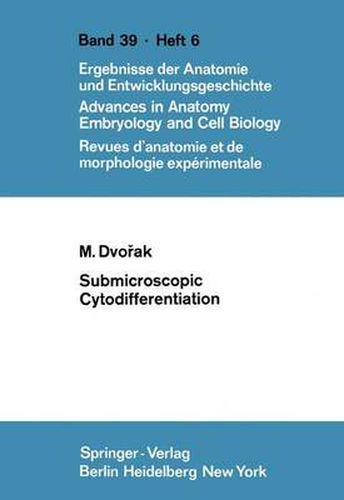Readings Newsletter
Become a Readings Member to make your shopping experience even easier.
Sign in or sign up for free!
You’re not far away from qualifying for FREE standard shipping within Australia
You’ve qualified for FREE standard shipping within Australia
The cart is loading…






This title is printed to order. This book may have been self-published. If so, we cannot guarantee the quality of the content. In the main most books will have gone through the editing process however some may not. We therefore suggest that you be aware of this before ordering this book. If in doubt check either the author or publisher’s details as we are unable to accept any returns unless they are faulty. Please contact us if you have any questions.
The progressive changes which occur during the life history of an individual metazoon are summed up under the term development. The adult multicellular organism differs from its early developmental stages by its size, shape, proportions, and by its parts having gradually acquired different structural and functional properties. Accordingly, several main processes involved in development, whose classification is a matter of convention, may be delimitated. Differentiation is considered one of the most important of them. In the broader sense of the word, the term differentiation is used for describing transformations, through which heterogeneity-at all levels (macroscopic, microscopic, submicroscopic)-arises or increases. The basic component of the wider phenomenon of differentiation is differentiation of cells, so-called cytodifferentiation. What is cytodifferentiation? In the course of ontogeny, the cells, starting with the fertilized ovum, via the blastomeres of the segmenting ovum and the germ layer cells, right to the differentiating and fully differentiated cells of tissues and organs, gradually acquire new properties which make them different both from a morphological and functional point of view. All changes involved in this process come under the term cytodifferentiation. Differentiation of cells (though not of all kinds of cells) continues throughout the entire life of the individual, but reaches its maximum at the embryonic period when it becomes the chief feature of development.
$9.00 standard shipping within Australia
FREE standard shipping within Australia for orders over $100.00
Express & International shipping calculated at checkout
This title is printed to order. This book may have been self-published. If so, we cannot guarantee the quality of the content. In the main most books will have gone through the editing process however some may not. We therefore suggest that you be aware of this before ordering this book. If in doubt check either the author or publisher’s details as we are unable to accept any returns unless they are faulty. Please contact us if you have any questions.
The progressive changes which occur during the life history of an individual metazoon are summed up under the term development. The adult multicellular organism differs from its early developmental stages by its size, shape, proportions, and by its parts having gradually acquired different structural and functional properties. Accordingly, several main processes involved in development, whose classification is a matter of convention, may be delimitated. Differentiation is considered one of the most important of them. In the broader sense of the word, the term differentiation is used for describing transformations, through which heterogeneity-at all levels (macroscopic, microscopic, submicroscopic)-arises or increases. The basic component of the wider phenomenon of differentiation is differentiation of cells, so-called cytodifferentiation. What is cytodifferentiation? In the course of ontogeny, the cells, starting with the fertilized ovum, via the blastomeres of the segmenting ovum and the germ layer cells, right to the differentiating and fully differentiated cells of tissues and organs, gradually acquire new properties which make them different both from a morphological and functional point of view. All changes involved in this process come under the term cytodifferentiation. Differentiation of cells (though not of all kinds of cells) continues throughout the entire life of the individual, but reaches its maximum at the embryonic period when it becomes the chief feature of development.